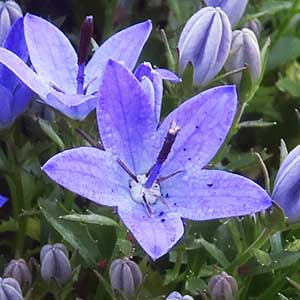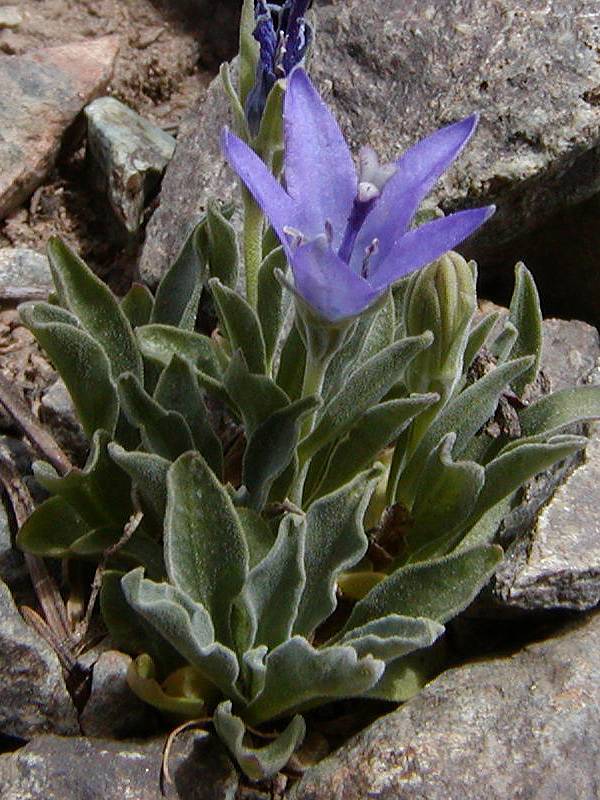Campanula piperi
Campanula scabrella
Olympic bellflower
rough bellflower, rough harebell
Basal leaves oblanceolate, 1-3 cm. long and 1/3 as wide, sharply serrate with firm, slender teeth;
cauline leaves alternate, similar and nearly as large as the basal.
Leaves entire, the basal ones oblanceolate, 0.5-4 cm. long, the cauline ones alternate, narrower and reduced.
Flowers 1-3 on the branch ends;
calyx lobes 5, leaf-like, narrow, 5-10 mm. long, with a few slender teeth;
corolla saucer-shaped, blue, 12-16 mm. long, the 5 broad lobes twice as long as the tube;
stamens 5;
style much shorter than the corolla;
ovary inferior.
Flowers usually solitary, erect;
calyx lobes 5, 2-6 mm. long;
corolla bell-shaped, blue, 6-12 mm. long, the 5 lobes about equal to the tube;
stamens 5;
style equaling the corolla;
ovary inferior.
Capsule 3-celled; sub-globose, 3-5 cm. long and wide.
Capsule 3-celled, cylindric-obconic, 5-7 mm. long.



